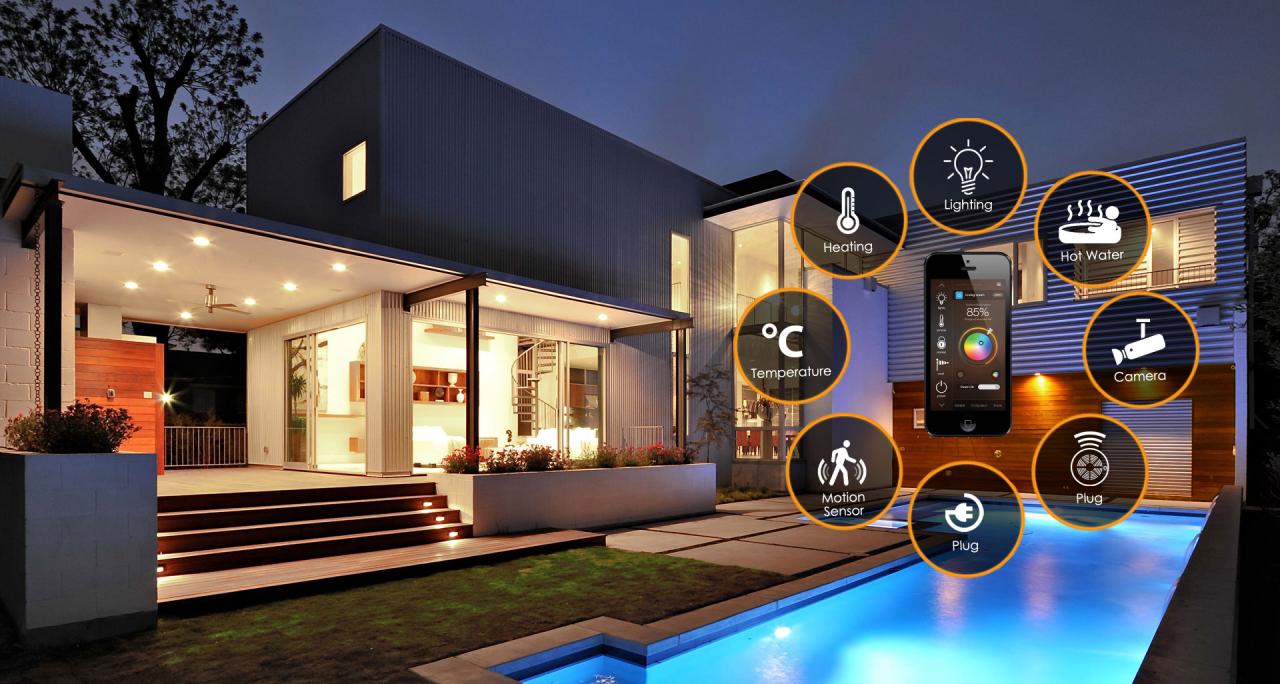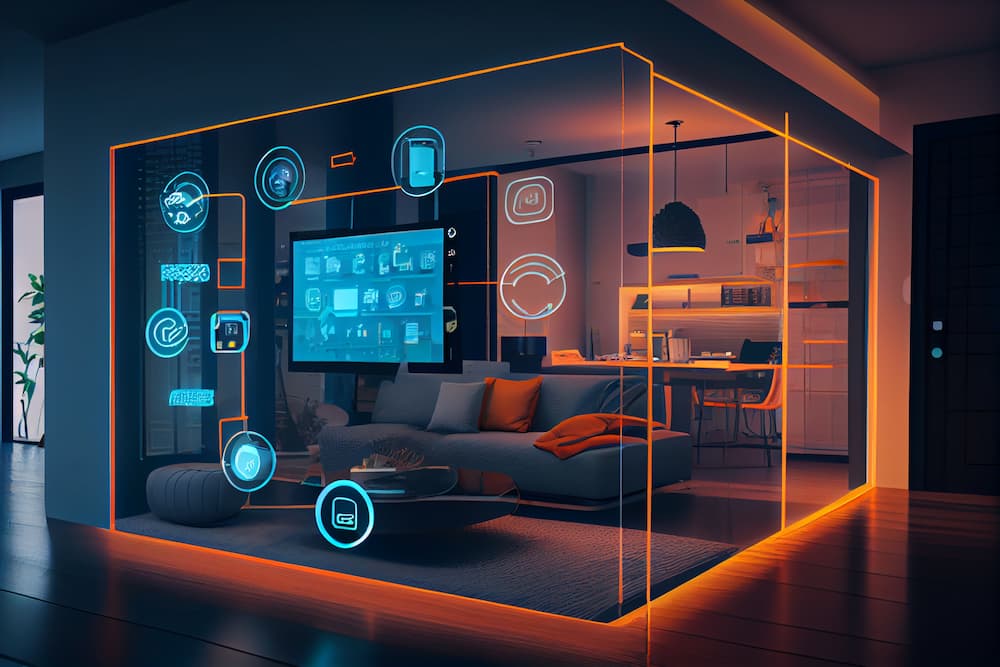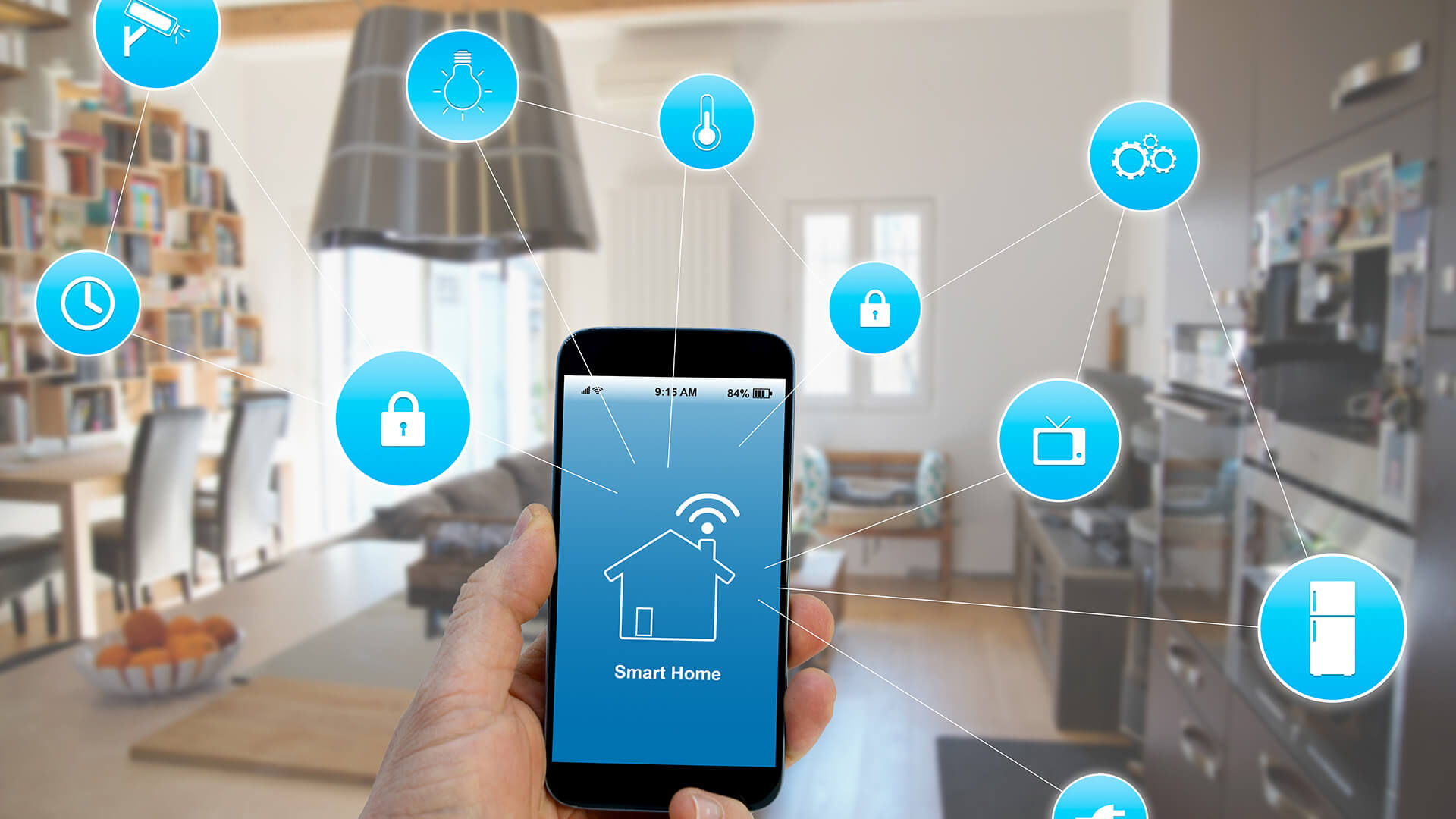The concept of a “smart home” has evolved from a futuristic fantasy into a tangible reality, profoundly reshaping the way we interact with our living spaces. Smart home technology integration refers to the seamless connection and automation of various devices and systems within a residence, all controlled through a central hub or remote interface. This integration goes far beyond simple convenience; it encompasses enhanced security, optimized energy consumption, improved comfort, and a heightened sense of control over one’s personal environment. As technology continues its rapid advancement, the integration of smart home devices is exploding, transforming ordinary houses into intelligent, responsive, and intuitive homes that cater to the unique needs and preferences of their occupants.
The current landscape of smart home technology is characterized by increasing sophistication, interoperability, and user-friendliness. What once required complex wiring and professional installation can now often be achieved with plug-and-play devices and intuitive mobile applications. This accessibility, coupled with a growing awareness of the benefits, is fueling the widespread adoption of smart home solutions across diverse demographics. From basic smart lighting systems to comprehensive whole-home automation platforms, the possibilities for creating a truly intelligent living space are virtually limitless.
The Driving Forces Behind Smart Home Adoption

Several key factors are accelerating the integration of smart home technology into modern residences:
- Increased Convenience and Comfort: The primary allure of smart home technology is the unparalleled convenience it offers. Imagine adjusting your thermostat from your smartphone before you arrive home, having your lights turn on automatically as you enter a room, or commanding your entertainment system with your voice. These seemingly small conveniences accumulate to significantly enhance daily living. Smart homes learn preferences and automate routines, freeing up time and mental energy.
- Enhanced Home Security and Safety: Smart security systems provide peace of mind by offering features like remote monitoring, motion detection, smart locks, and video doorbells. Homeowners can receive alerts on their phones if unusual activity is detected, grant remote access to visitors, or even deter intruders with automated lighting. Beyond security, smart smoke detectors, carbon monoxide sensors, and water leak detectors offer proactive safety measures, sending alerts and potentially shutting off systems in emergencies.
- Energy Efficiency and Cost Savings: Smart home devices, particularly smart thermostats, lighting, and appliances, are designed to optimize energy consumption. They can learn usage patterns, respond to occupancy, and integrate with weather forecasts to minimize energy waste. This not only reduces the home’s carbon footprint but also translates directly into significant savings on utility bills over time, making smart home investments financially attractive.
- Accessibility and Support for Aging in Place: Smart home technology can greatly enhance accessibility for individuals with disabilities and support seniors wishing to age in place safely and independently. Voice control, automated doors and lighting, smart health monitoring devices, and remote assistance capabilities can provide critical support and improve quality of life.
- Technological Advancements and Affordability: The continuous innovation in sensor technology, wireless communication (like Wi-Fi, Bluetooth, Zigbee, Z-Wave), and artificial intelligence has made smart home devices more powerful, reliable, and interoperable. Concurrently, increased competition and economies of scale have driven down prices, making these technologies more accessible to a wider consumer base.
- Seamless Integration with Personal Devices: The pervasive use of smartphones, tablets, and smart speakers has created a natural ecosystem for controlling smart home devices. Users are already familiar with these interfaces, making the adoption and management of smart home technology intuitive and straightforward.
- Personalization and Customization: Smart home systems offer unparalleled opportunities for personalization. Users can create custom routines, scenes, and automations that perfectly match their lifestyle, mood, and schedule. This level of customization allows for a truly bespoke living experience.
Core Categories of Smart Home Technologies
The ecosystem of smart home technology is vast and continuously expanding, but it can generally be categorized into several key areas:
Smart Lighting Systems
Features: Dimmable, color-changing LEDs; remote control via apps; voice control; scheduling; motion activation; integration with other smart devices (e.g., lights turn on when smart lock unlocks).
Benefits: Energy savings, mood setting, enhanced security (e.g., “vacation mode” to simulate occupancy), convenience.
Examples: Philips Hue, Lutron Caseta, Sengled, C by GE.
Smart Climate Control (Thermostats and HVAC)
Features: Remote temperature control; learning algorithms that adapt to preferences; geofencing (adjusts temperature based on occupant location); integration with weather data; zoning capabilities.
Benefits: Significant energy savings, optimal comfort, reduced HVAC wear and tear.
Examples: Nest Learning Thermostat, Ecobee Smart Thermostat, Honeywell Home, Tado.
Smart Security and Surveillance
Features: Smart locks (keypad, fingerprint, remote unlock); video doorbells (two-way audio, motion alerts); indoor/outdoor cameras (live stream, recording, night vision); alarm systems (door/window sensors, motion detectors); professional monitoring options.
Benefits: Deterrence of crime, remote monitoring, instant alerts, peace of mind, insurance benefits.
Examples: Ring, Arlo, SimpliSafe, August Smart Lock, ADT Smart Home.
Smart Appliances
Features: Refrigerators with touchscreens and internal cameras; smart ovens with remote preheating and recipe integration; smart washing machines and dryers with remote start and cycle monitoring; smart dishwashers that optimize water usage.
Benefits: Convenience, remote control, energy efficiency, optimized performance, potential for automated reordering of groceries.
Examples: Samsung Family Hub, LG ThinQ, GE Appliances SmartHQ.
Smart Entertainment Systems
Features: Voice-controlled media streaming; multi-room audio systems; smart TVs with integrated streaming services; universal remotes (physical or app-based) that control various devices.
Benefits: Centralized control, seamless media experience, enhanced entertainment options, simplified operation.
Examples: Sonos, Apple HomePod, Google Chromecast, Amazon Fire TV.
Smart Blinds and Window Coverings
Features: Automated opening and closing based on schedules, sunlight, or temperature; remote control; voice control.
Benefits: Energy efficiency (blocking sun in summer, retaining heat in winter), privacy, convenience, enhanced aesthetic.
Examples: Lutron, Somfy, Bali Blinds Smart Home.
Smart Plugs and Outlets
Features: Turn any old appliance into a smart device; remote control; scheduling; energy monitoring.
Benefits: Cost-effective way to introduce smart features, energy savings, convenience.
Examples: TP-Link Kasa, Wemo, Gosund.
Smart Health and Wellness Devices
Features: Air quality monitors; smart scales; sleep trackers; connected fitness equipment; automated humidifiers/dehumidifiers.
Benefits: Proactive health management, improved indoor air quality, personalized wellness insights.
Examples: Awair, Withings, Philips SmartSleep.
The Importance of a Central Hub and Interoperability
While individual smart devices offer benefits, the true power of smart home technology lies in its integration through a central hub and the interoperability between devices.
Central Hubs (Controllers)
These devices act as the brain of the smart home, allowing different smart devices from various manufacturers to communicate with each other.
Types: Dedicated smart home hubs (e.g., Samsung SmartThings, Hubitat), smart speakers with integrated hubs (e.g., Amazon Echo, Google Nest Hub), or even advanced routers with smart home capabilities.
Functions: Orchestrate automations, manage device connections, provide a centralized control interface, allow for remote access.
Communication Protocols
Different smart devices use various communication protocols to talk to each other.
- WIFI: Common for many devices due to existing home networks, but can lead to network congestion with many devices.
- Bluetooth: Good for short-range communication, often used for initial setup or direct device control.
- Zigbee and Z-Wave: Low-power mesh networks specifically designed for smart home devices, offering better reliability, scalability, and less interference than Wi-Fi for many applications.
- Thread: A newer, IP-based mesh networking protocol designed for low-power devices, offering enhanced security and direct cloud connectivity.
- Matter: A new industry standard that aims to unify smart home device compatibility across different brands and ecosystems, promising to simplify integration and improve user experience significantly. This is a game-changer for interoperability.
Voice Assistants
Integrations with voice assistants like Amazon Alexa, Google Assistant, and Apple Siri have become essential for hands-free control of smart home devices, making interactions more intuitive and natural.
Designing a Smart Home

Effective smart home integration requires planning and consideration:
- Start Small and Scale Up: Begin with a few key devices that address immediate needs (e.g., smart lighting, smart thermostat) and gradually expand the system as you become more comfortable and identify additional areas for automation.
- Choose a Central Ecosystem: Deciding on a primary smart home ecosystem (e.g., Google Home, Amazon Alexa, Apple HomeKit) early on can simplify device compatibility and management, especially until Matter becomes fully pervasive.
- Consider Professional Installation for Complex Systems: While many devices are DIY-friendly, complex whole-home automation systems, integrated security systems, or custom audio-visual setups may benefit from professional installation to ensure optimal performance and seamless integration.
- Prioritize Interoperability: Look for devices that are compatible with your chosen hub or voice assistant, and increasingly, those that support the Matter standard for future-proofing.
- Plan for Network Infrastructure: A robust home network (reliable Wi-Fi, potentially Ethernet cabling for high-bandwidth devices) is fundamental for a well-functioning smart home.
- Think About Automation and Routines: The true value is in automation. Plan “scenes” (e.g., “Good Morning” scene that opens blinds, turns on lights, starts coffee maker) and “routines” (e.g., lights turn off when everyone leaves home via geofencing).
- Address Privacy and Security Concerns: Understand the data collection practices of smart devices and manufacturers. Secure your home network with strong passwords and two-factor authentication. Regular software updates are crucial for security.
Challenges and Future Directions
Despite the accelerating growth, the smart home industry faces ongoing challenges and exciting future directions:
- Interoperability Standards: While Matter aims to solve many compatibility issues, fragmented ecosystems still pose a challenge for consumers. Continued standardization is crucial.
- Data Privacy and Security: The vast amount of data collected by smart devices raises legitimate privacy concerns. Manufacturers and policymakers must work to ensure robust data protection and transparent data handling practices. Cybersecurity vulnerabilities are also a constant threat that requires continuous vigilance.
- Complexity for the Average User: While improving, some advanced smart home setups can still be overwhelming for users who are not tech-savvy. Simplification of setup and management processes is vital for broader adoption.
- Cost of Entry for Comprehensive Systems: While individual devices are affordable, outfitting an entire home with integrated smart technology can still represent a significant investment.
- Reliance on Internet Connectivity: Many smart home features rely on a stable internet connection. Robust offline capabilities and local processing can improve reliability.
- Energy Consumption of Smart Devices Themselves: While smart devices save energy, the collective energy consumption of the devices themselves needs to be monitored and minimized.
- Evolution of AI and Machine Learning: Smart homes will become even more intelligent, learning subtle cues, anticipating needs, and adapting to changes in behavior and environmental conditions without explicit programming. This includes predictive maintenance and proactive problem-solving.
- Integration with Smart Cities: The smart home will increasingly become a node in a larger “smart city” ecosystem, sharing data (with consent) to optimize urban services like traffic management, waste collection, and public safety.
- Modular and Flexible Smart Home Systems: Future smart homes may feature more modular and easily upgradable components, allowing homeowners to adapt their systems as technology evolves.
Conclusion
The integration of smart home technology is no longer a luxury but an increasingly essential component of modern living. It offers an unprecedented level of convenience, security, energy efficiency, and personalization, fundamentally enhancing the quality of life within our residential spaces. As the industry continues to innovate, driven by advancements in AI, connectivity, and interoperability standards like Matter, smart homes will become even more intuitive, responsive, and seamlessly woven into the fabric of our daily lives.
From optimizing our energy consumption to providing round-the-clock security and offering personalized comfort, smart home technology is not just about connecting devices; it’s about creating intelligent environments that truly understand and support the well-being of their inhabitants. The future of housing is undeniably smart, and the integration trends we see today are merely the beginning of this exciting revolution.











